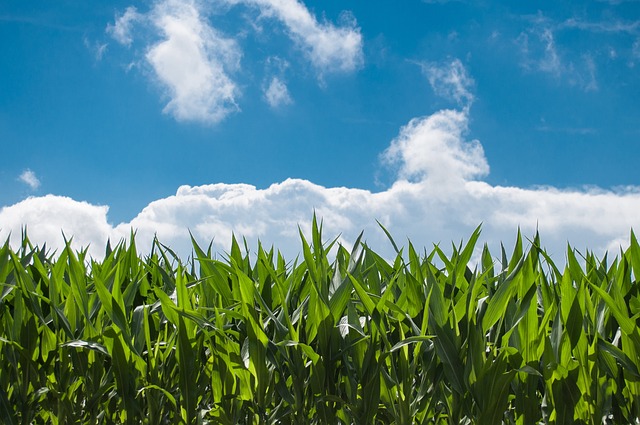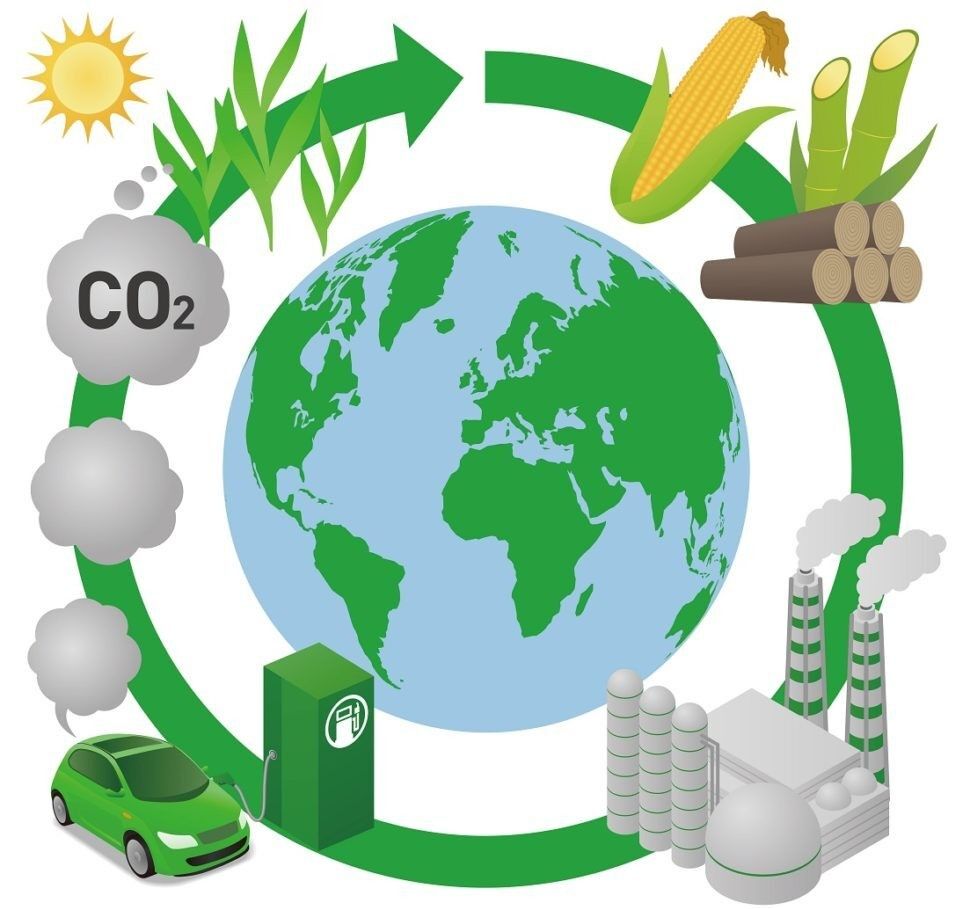The biofuels are also called as renewable diesel or Hydrotreated vegetable oil. Biofuels is a type of Renewable energy that is increasingly gaining attention as a viable alternative to traditional fossil fuels. Biological materials, such as plants and animal waste, are the source of biofuels, which power vehicles and machinery.
In this comprehensive guide to Biofuels, we will explore what Biofuels are, their types, advantages, Disadvantages, and their impact on the environment.
Types of Biofuels:
There are three main types of Biofuels: First-generation, Second-generation, and Third-generation.
First generation Biofuels
First-generation Biofuels made from food crops such as corn, Soybeans, Sugarcane, and vegetable oil. These crops are processed to extract sugars or oils, which are converted into renewable diesel such as ethanol and Biodiesel.
Ethanol is a type of alcohol made from corn, Sugarcane, or other crops. It also used as a fuel additive in gasoline to increase its octane rating and reduce harmful emissions. Ethanol also used as a standalone fuel in flex-fuel vehicles that run on gasoline or ethanol.
Biodiesel is made from vegetable oils or animal fats and can be used as fuel for diesel engines. It is often blended with petroleum diesel to reduce emissions and improve fuel efficiency.
While First-generation biofuels have the potential to reduce Greenhouse gas emissions and promote energy security, they also have some significant drawbacks. One of the main concerns is that the production of First-generation renewable diesel can compete with food production and lead to higher food prices. Additionally, using food crops for Biofuels can lead to land-use changes and Deforestation, which can have negative Environmental impacts.
Second-generation Biofuels:
Second-generation Biofuels are made from Non-food sources such as Agricultural waste, forest residues, and energy crops. These Biofuels are produced from materials not used for food production and do not compete with food crops.
Examples of Second-generation Biofuels include Cellulosic ethanol, made from Cellulose in plant material such as corn stover and Switchgrass, and Biobutanol, made from agricultural waste such as corn cobs and wheat straw. Renewable diesel, made from fats, oils, and greases, is another type of Second-generation biofuel.
One of the benefits of Second-generation Biofuels is that they can be produced from abundant, low-cost feedstocks, reducing the competition for food crops and potentially lowering the cost of production. Additionally, Second-generation renewable diesel can have lower Greenhouse gas emissions than First-generation Biofuels.
However, Second-generation Biofuels are also associated with challenges, including the need for specialized technology and infrastructure to produce and distribute these fuels on a large scale. There are also concerns about the environmental impact of growing energy crops, such as the potential for land-use changes and water Scarcity.
3rd Generation Biofuels:
Third-generation Biofuels are Biofuels that are produced from algae and other types of Microorganisms. These renewable diesel are sometimes referred to as “advanced Biofuels” and are considered to be a promising source of Renewable energy because they have the potential to be produced on a large scale without competing with food crops or causing negative environmental impacts.
Algae-based Biofuels can be produced using various methods, such as open ponds, closed Photobioreactors, and hybrid systems. Some algae species can produce high levels of lipids (oils) that can be converted into Hydrotreated vegetable oil such as Biodiesel. In contrast, others can produce Hydrogen or ethanol.
One of the benefits of Third-generation renewable diesel is that they can be produced using land and water resources that are unsuitable for food production, reducing the competition for resources. Additionally, Algae-based renewable diesel have the potential to produce higher yields of Hydrotreated vegetable oil per unit of land than first- and Second-generation Biofuels.
However, there are also challenges associated with the production of Third-generation renewable diesel, including the high cost of production and the need for further research and development to scale up production and make these fuels more economically viable. There are also concerns about the environmental impact of algae cultivation, such as the potential for nutrient runoff and water pollution.
4th Generation Biofuels:
Fourth-generation Biofuels are the newest type and are still in the research and development phase. These renewable diesel are produced using Genetically Engineered Microorganisms, such as Bacteria or yeast, that can directly convert Sunlight and carbon dioxide into Biofuels.
The process of producing Fourth-generation renewable diesel is known as Synthetic biology. It involves designing and Engineering Microorganisms to produce specific compounds that can be converted into Biofuels. This technology has the potential to create more efficient and Sustainable Hydrotreated vegetable oil that can be made at a larger scale than previous generations of Biofuels.
One of the benefits of Fourth-generation Hydrotreated vegetable oil is that they can be produced using Non-arable land and Non-potable water resources, reducing competition for resources and minimizing the environmental impact. Additionally, because these Biofuels are produced using sunlight and carbon dioxide, they can be Carbon-neutral or even Carbon-negative.
However, there are still many challenges associated with the production of Fourth-generation Biofuels, such as the high cost of production, the need for further research and development to scale up production, and the potential environmental impact of using Genetically modified Microorganisms. Overall, while Fourth-generation Hydrotreated vegetable oil show promise, further research and development are needed to determine their potential as a viable Renewable energy source.
Important Biofuel Crops:
Biofuel crops are plants specifically grown to produce Biofuels, which are alternative energy sources that can replace traditional fossil fuels. The importance of biofuel crops lies in their potential to reduce dependence on fossil fuels, lower Greenhouse gas emissions, and promote sustainable agriculture.
One of the main benefits of biofuel crops is their ability to reduce Greenhouse gas emissions, which contribute to climate change. Hydrotreated vegetable oil produced from these crops emit fewer Greenhouse gases compared to fossil fuels.
Also, because biofuel crops absorb carbon dioxide from the atmosphere, they can help mitigate climate change’s effects.
Biofuel crops can also be grown on Non-arable lands, such as degraded land or marginal farmland, which is unsuitable for food production. This reduces the competition between food and fuel crops for arable land and can help to promote sustainable agriculture practices.
Here are important biofuel crops:
Several biofuel crops are important because they can contribute to renewable energy production and reduce greenhouse gas emissions. Some of the most important biofuel crops are:
Corn:
Corn is one of the most widely used biofuel crops in the United States and is primarily used to produce ethanol. It is a First-generation biofuel crop, which is edible and commonly used in food production. Corn is used to producing ethanol, which is added to gasoline to increase its octane rating and reduce emissions.

Sugar-rich corn is converted into ethanol in a similar way to brewing beer. The corn kernels are blended with warm water and yeast. The yeast ferments the mixture and produces ethanol. This ethanol is then mixed with gasoline and then used in car engines.
Sugarcane:
Sugarcane is another widely used biofuel crop, particularly in Brazil. It is used to produce ethanol and is a first-generation crop. Sugarcane-based ethanol is often used as a fuel for transportation, and it can also be used as a cooking fuel. Producing ethanol from Sugarcane is six times more inexpensive than corn.
Soybeans:
Soybeans are a First-generation biofuel crop that is primarily used to produce Biodiesel. They are another commonly used biofuel crop, particularly in Biodiesel production.
Biodiesel is a Renewable fuel from vegetable oils, animal fats, or recycled cooking oil. It can be used in diesel engines without modifications.
Not just Crayons, tofu, Shampoos, and Soy sauce, Soybeans are also used as a source of fuel. Soybean diesel makes more energy than corn ethanol. The oil content in soybean is around 20%.
Switchgrass:
Switchgrass is a Second-generation biofuel crop that is native to North America. It is a Perennial grass grown on marginal lands and primarily used to produce Cellulosic ethanol.
Switchgrass has the highest potential to cure our dependence on fossil fuels. Switchgrass has a form of Cellulose that consumes less energy to convert into ethanol.
Jatropha:
Jatropha biofuel is a type of biofuel that is derived from the seeds of the Jatropha curcas plant. This plant is native to Central America, but it is now grown in many parts of the world for its oil-rich seeds, which can produce Biodiesel.

Jatropha is a Second-Generation biofuel crop that is grown in Tropical regions. It is a Non-edible plant that produces Oil-rich seeds that can make Biodiesel.
Algae:
Algae is a Third-generation biofuel crop that has the potential to produce large quantities of biofuels in a relatively small area. It can be grown in ponds or tanks and plant oils for Biodiesel.
Algae is a relatively new biofuel crop that has shown promise as a Renewable fuel source. Algae can be grown in ponds or tanks, producing large quantities of oil that can be converted into Biodiesel.
These are just a few examples of important biofuel crops, and ongoing research is being conducted to develop new, more efficient crops for biofuels production.
Rapeseed/Canola:
Rapeseed has been used for cooking and to light up homes for centuries. Canola is the Best-known Rapeseed which is an important form of Bodiesel fuel. Generally, canola and other Rapeseed oil have higher oil content than vegetable oil. These emit less carbon than diesel fuel.

Important Biofuels:
Biofuels have gained immense popularity as an alternative to traditional fossil fuels in recent years due to their renewable nature and lower carbon footprint. Some of the most important Biofuels are:
Bio-Ethanol:
It is a 1st generation Biofuels. It is produced from starch or sugar crops using Fermentation by reacting Ethylene with steam. Ethanol is a High-Octane fuel that replaced lead as an octane enhancer in petrol. It is Biodegradable, enhances combustion, and causes less environmental pollution.
Bioethanol is a type of alcohol made from fermenting corn, Sugarcane, or other sugar-rich crops. It is commonly used as a fuel additive to gasoline. It can also be used in high concentrations as a standalone fuel.
Bio-Diesel:
Biodiesel is a Renewable diesel fuel from vegetable oils, animal fats, or recycled cooking oils. It can be used in diesel engines without modification and has lower emissions than petroleum diesel.
It is a 2nd generation biofuels. Bio-Diesel is produced through a biochemical process called Thermo Esterification. It is derived from vegetable/ plant/ animal oil, animal fats, etc. These vegetable oils are chemically called TRIGLYCERIDES.
These Triglycerides are reacted with Methanol; the Glycerine in Triglycerides is replaced with Methanol to produce methyl ester known as Biodiesel. It is the best alternative to conventional diesel.
Bio-Gas:
Biogas is a renewable fuel produced by the Anaerobic digestion of organic materials such as manure, food waste, and agricultural residues. It is composed mainly of methane and carbon dioxide. It can be used as a fuel for electricity generation or heating.
Bio-Butanol:
Bio-butanol, also known as Biobutanol, is a type of biofuels produced through the fermentation of various agricultural and organic materials, such as sugar cane, corn, and wheat. It is a colorless liquid that can be used as fuel in internal combustion engines, similar to gasoline.
The high energy and lower vapor pressure in butanol are the highest among other gasoline alternatives. So it reduces the emissions. It is principally used as a fuel in internal combustion engines.
Bio-Hydrogen:
Bio-hydrogen is a renewable and sustainable energy source produced through the Biological fermentation of organic materials such as sugar, starch, and Cellulose.
It’s production is typically done by using Microorganisms such as Bacteria and algae, which break down the organic materials and release Hydrogen gas as a Byproduct. It is the best alternative for the replacement of Biofuels.
Evolution of Biofuels in India:
The evolution of Biofuels in India can be traced back to the early 1970s when the country faced its first oil crisis. This led to the exploration of alternative energy sources, and the government started promoting renewable diesel as a solution. The National Biofuel Policy was introduced in 2009 to reduce dependence on fossil fuels and encourage sustainable development.
Here’s a brief overview of the Evolution of Biofuels in India year-wise:
1975:Indian government started examining the Blending of ethanol with petrol. And set up six technical committees and four study groups for the same.
1980:Indian oil corporation conducted trials on 15 passenger cars and 21 two & three-wheelers using ethanol blending.
2002:government initiated mandatory blending of 5% ethanol with petrol in 9 states and four union territories.
2003: The Indian government initiated the Ethanol Blended Petrol (EBP) Program, mandating a 5% ethanol blend in petrol.
2006: The National Policy on Biofuels was announced to promote biofuel production and use in the country.
2008: The EBP program was expanded to a 10% ethanol blend in petrol.
2010: The government launched the National Mission on Sustainable Agriculture, which aimed to increase biofuels feedstock production.
2015: The Biofuels Policy was released, setting a target of achieving 20% ethanol blending and 5% biodiesel blending by 2017.
2018: The government announced the new Biofuels Policy, which aims to achieve 20% blending of ethanol and Biodiesel by 2030 and promote using compressed biogas as a transport fuel.
There are several Advantages and Disadvantages of Biofuels:
Advantages of Biofuels:
There are several advantages of using Biofuels:
- Renewable: Biofuels are made from renewable sources such as plants, algae, and animal waste, which means they can be replenished and are not finite like fossil fuels.
- Lower carbon emissions: Biofuels emit significantly fewer greenhouse gases than fossil fuels, making them a cleaner alternative and helping mitigate climate change.
- Energy security: Biofuels reduce dependence on imported oil, increasing energy security and reducing the vulnerability to supply disruptions and price volatility.
- Job creation: The production and use of Hydrotreated vegetable oil can create jobs in rural areas where the feedstocks are grown and processed.
- Cost-effective: As technology improves and economies of scale are realized, Biofuels are becoming more cost-competitive with fossil fuels.
- Biodegradable: Biofuels are Biodegradable, meaning they do not persist in the environment like fossil fuels and are less harmful if spilled.
- Diversification of energy sources: The use of Biofuels provides a diversification of energy sources, which can help reduce geopolitical tensions associated with traditional energy sources.
Dis-Advantages of Biofuels:
There are several Disadvantages of Biofuels, including:
- Limited availability: Crops used for producing Hydrotreated vegetable oil, and their availability is limited by weather conditions, pests, and other factors.
- Land use: Large-scale production of Renewable diesel can require significant amounts of land, which can impact food production and Biodiversity.
- Cost: The production of Biofuels can be expensive, which can result in higher consumer prices.
- Carbon footprint: The production and transportation of Biofuels result in a significant carbon footprint, despite their marketing as a cleaner alternative to fossil fuels.
- Competition with food production: The production of Biofuels from crops can lead to competition, which drives up food prices and impacts food security.
- Energy output: renewable diesel typically have a lower energy output than traditional fossil fuels, impacting their overall efficiency and Cost-effectiveness.
Conclusion:
In conclusion, Biofuels have the potential to play a significant role in reducing greenhouse gas emissions and mitigating the impacts of climate change. They offer a Renewable and Sustainable alternative to traditional fossil fuels and can help to promote energy security and independence.
While there are still challenges to overcome, ongoing research and development in this area offer promising prospects for the future of renewable diesel.
The use of Biofuels is increasing around the world, and technological advancements are continuously improving their efficiency and sustainability. As such, Biofuels have the potential to play an important role in the transition towards a more sustainable energy future.
For more articles visit: 21hashtags
